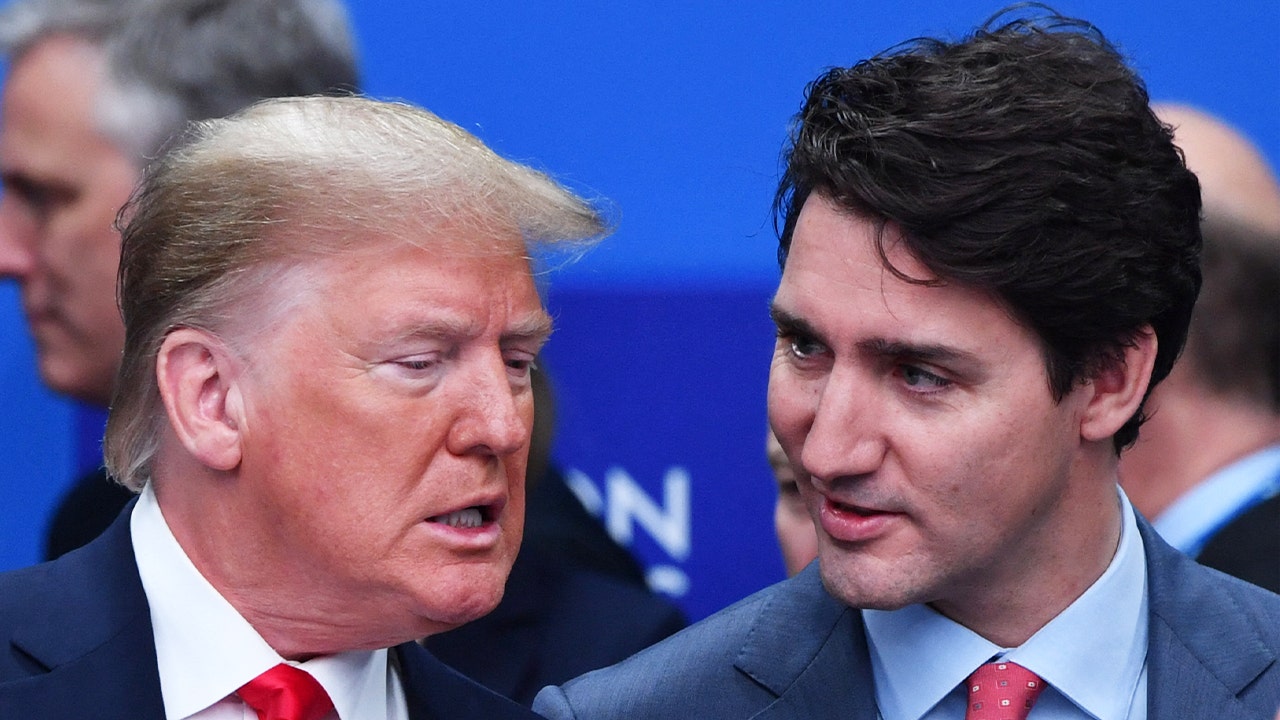World
Nobel Prize announcements are getting underway with the unveiling of the medicine prize

STOCKHOLM (AP) — Six days of Nobel Prize announcements begin Monday with the unveiling of the winner of the medicine award.
The Nobel Prize in physiology or medicine was won last year by Swedish scientist Svante Paabo for discoveries in human evolution that unlocked secrets of Neanderthal DNA which provided key insights into our immune system, including our vulnerability to severe COVID-19.
The award was the second in the family. Paabo’s father, Sune Bergstrom, won the Nobel Prize in medicine in 1982.
Nobel announcements continue with the physics prize on Tuesday, chemistry on Wednesday and literature on Thursday. The Nobel Peace Prize will be announced Friday and the economics award on Oct. 9.
The prizes carry a cash award of 11 million Swedish kronor ($1 million). The money comes from a bequest left by the prize’s creator, Swedish inventor Alfred Nobel, who died in 1896.
The prize money was raised by 1 million kronor this year because of the plunging value of the Swedish currency.
The laureates are invited to receive their awards at ceremonies on Dec. 10, the anniversary of Nobel’s death. The prestigious peace prize is handed out in Oslo, according to his wishes, while the other award ceremony is held in Stockholm.
___
Corder reported from The Hague, Netherlands.__
Follow all AP stories about the Nobel Prizes at https://apnews.com/hub/nobel-prizes

World
DOJ Officials May Have Tried to Sway 2020 Election for Trump, Watchdog Says
World
Trump reinforces 'all hell will break out' if hostages not returned by inauguration

President-elect Trump reiterated that “all hell will break out” if the hostages still held in Gaza have not been freed by the time he enters office in two weeks on Jan. 20.
Trump was asked about the threats he first levied in early December at the Hamas terrorist organization that has continued to hold some 96 hostages, only 50 of whom are still assessed to be alive, including three Americans.
“All hell will break out,” Trump said, speaking alongside Steve Witkoff, special envoy to the Middle East and who has begun participating in cease-fire negotiations alongside the Biden administration and leaders from Egypt, Qatar, Israel and Hamas.
(Seven American hostages are being held in Gaza. From left, Edan Alexander, Sagui Dekel-Chen, Keith Siegel, Omer Neutra, Judi Weinstein Haggai, Gadi Haggai and Itay Chen, of whom three are still believed to be alive.)
PARDONS, ISRAEL, DOMESTIC TERRORISM AND MORE: BIDEN’S PLANS FOR FINAL DAYS OF PRESIDENCY
“If those hostages aren’t back – I don’t want to hurt your negotiation – if they’re not back by the time I get into office, all hell will break out in the Middle East,” he added in reference to Witkoff.
Trump again refused to detail what this would mean for Hamas and the Trump transition team has not detailed for Fox News Digital what sort of action the president-elect might take.
In response to a reporter who pressed him on his meaning, Trump said, “Do I have to define it for you?”
“I don’t have to say any more, but that’s what it is,” he added.

President-elect Trump makes remarks at Mar-a-Lago in Palm Beach, Florida, Jan. 7, 2025. (Reuters/Carlos Barria)
ISRAELI PM OFFICE DENIES REPORTS THAT HAMAS FORWARDED LIST OF HOSTAGES TO RELEASE IN EVENT OF DEAL
Witkoff said he would be heading to the Middle East either Tuesday night or Wednesday to continue cease-fire negotiations.
In the weeks leading up to the Christmas and Hanukkah holidays, there was a renewed sense of optimism that a cease-fire could finally be on the horizon after a series of talks over the prior 14 months had not only failed to bring the hostages home, but saw a mounting number of hostages killed in captivity. Once again, though, no deal was pushed through before the New Year.
After nearly 460 days since the hostages were first taken in Gaza in the aftermath of the Oct. 7, 2023, attacks, Witkoff appeared to be holding onto hope that a deal could be secured in the near future.

Steve Witkoff, speaks during a campaign event for former President Trump at Madison Square Garden in New York, on Oct. 27, 2024. (Adam Gray/Bloomberg via Getty Images)
“I think that we’ve had some really great progress. And I’m really hopeful that by the inaugural, we’ll have some good things to announce on behalf of the president,” Witkoff told reporters. “I actually believe that we’re working in tandem in a really good way. But it’s the president – his reputation, the things that he has said that are driving this negotiation and so, hopefully, it’ll all work out and we’ll save some lives.”
In addition to the roughly 50 people believed to be alive and in Hamas captivity, the terrorist group is believed to be holding at least 38 who were taken hostage and then killed while in captivity, as well as at least seven who are believed to have been killed on Oct. 7, 2023, and then taken into Gaza.
World
Former Cambodian opposition MP shot dead in Bangkok ‘assassination’

Lim Kimya, 74, had refused to flee Cambodia even after former PM Hun Sen threatened to make opposition MPs lives ‘hell’.
Lim Kimya, a former member of Cambodia’s National Assembly with the now-exiled opposition Cambodia National Rescue Party (CNRP), has been shot in Thailand’s capital, Bangkok, in an attack labelled an “assassination” by former colleagues.
According to The Bangkok Post newspaper, 74-year-old Lim Kimya was shot dead soon after he arrived in the Thai capital on a bus from Siem Reap, Cambodia, on Tuesday evening with his French wife and Cambodian uncle.
The CNRP confirmed the death in a statement, saying it was “shocked and deeply saddened by the news of the brutal and inhumane shooting” of Lim Kimya, who had served as the CNRP’s member of parliament for Kampong Thom province.
The former opposition MP, a dual Cambodian and French national, had reportedly continued to live in Cambodia, even as many other former opposition politicians fled, seeking political exile elsewhere in the face of threats from the governing Cambodian People’s Party (CPP) under then-Prime Minister Hun Sen.
The once hugely popular CNRP was dissolved in Cambodia and all its political activities banned by Cambodia’s Supreme Court in 2017. The party still exists as an organisation in Cambodian diaspora communities in Australia, the United States and elsewhere. In a statement shared on social media, the CNRP described Lim Kimya’s killing as an “assassination”.
(1/2) Bangkok’s Chana Songkhram Police Station has released more CCTV footages showing a suspect who brazenly shot and killed Lim Kimya, a 74-year-old Cambodian-French political activist.#bangkok #assassin #thailand pic.twitter.com/x2ObMIZob9
— Khaosod English (@KhaosodEnglish) January 8, 2025
“The CNRP strongly condemns this barbaric act, which is a serious threat to political freedom”, the statement said, adding that the political party is “closely following the murder case and calls on the Thai authorities to conduct a thorough and impartial investigation”.
Thailand’s Metropolitan Police Bureau is searching for a gunman who fled the scene on a motorbike, The Bangkok Post reported.
Human rights groups have called on authorities in Thailand to conduct a swift and thorough investigation.
Human Rights Watch’s Asia Director Elaine Pearson said the “cold-blooded killing” sent a message to Cambodian political activists that “no one is safe, even if they have left Cambodia”.
The cold-blooded killing of a former Cambodian opposition member in downtown Bangkok sends a chilling message to Cambodian activists that no one is safe, even if they have left Cambodia. https://t.co/x5FUl1PM6M
— Elaine Pearson (@PearsonElaine) January 8, 2025
Phil Robertson, director of the Asia Human Rights and Labour Advocates (AHRLA), said the killing had “all the hallmarks of a political assassination”.
“The direct impact will be to severely intimidate the hundreds of Cambodian political opposition figures, NGO activists, and human rights defenders who have already fled to Thailand to escape PM Hun Manet’s campaign of political repression in Cambodia,” Robertson said in a post on social media.
Hun Sen’s son Hun Manet became the country’s new leader by replacing his father as prime minister in August 2023.
Hun Sen calls for crackdown on Victory Day
Lim Kimya’s killing fell on January 7, the anniversary known as Victory Day for the governing CPP, which marks the date that Vietnamese troops, supported by a small contingent of Cambodian soldiers, entered Phnom Penh and toppled Pol Pot’s Khmer Rouge regime in 1979.
Since then, the country has remained under the iron-fisted rule of Hun Sen and now his son, Hun Manet, with little room for political opposition.
At a ceremony on Tuesday to mark the anniversary, Hun Sen called for a new law to brand people who wanted to overthrow his son’s government as “terrorists… who must be brought to justice”.
While there has been little effective political opposition to the CPP since 1979, that almost changed in 2013, the year that Lim Kimya was elected as an opposition member of Cambodia’s parliament following a general election in which the governing party was almost defeated by the CNRP.
The opposition had tapped into a groundswell of popular support for political change after decades of hardline rule by Hun Sen.
While the CNRP was once considered the sole viable opponent to the CPP and a potential election winner, it was dissolved by Cambodia’s politically-aligned judicial system in 2017.
Many opposition leaders and supporters have since fled into exile amid a wave of arrests and Hun Sen, promising to make their lives “hell”.
-

 Business7 days ago
Business7 days agoThese are the top 7 issues facing the struggling restaurant industry in 2025
-

 Culture7 days ago
Culture7 days agoThe 25 worst losses in college football history, including Baylor’s 2024 entry at Colorado
-

 Sports7 days ago
Sports7 days agoThe top out-of-contract players available as free transfers: Kimmich, De Bruyne, Van Dijk…
-

 Politics5 days ago
Politics5 days agoNew Orleans attacker had 'remote detonator' for explosives in French Quarter, Biden says
-

 Politics5 days ago
Politics5 days agoCarter's judicial picks reshaped the federal bench across the country
-

 Politics3 days ago
Politics3 days agoWho Are the Recipients of the Presidential Medal of Freedom?
-

 Health2 days ago
Health2 days agoOzempic ‘microdosing’ is the new weight-loss trend: Should you try it?
-

 World1 week ago
World1 week agoIvory Coast says French troops to leave country after decades


















